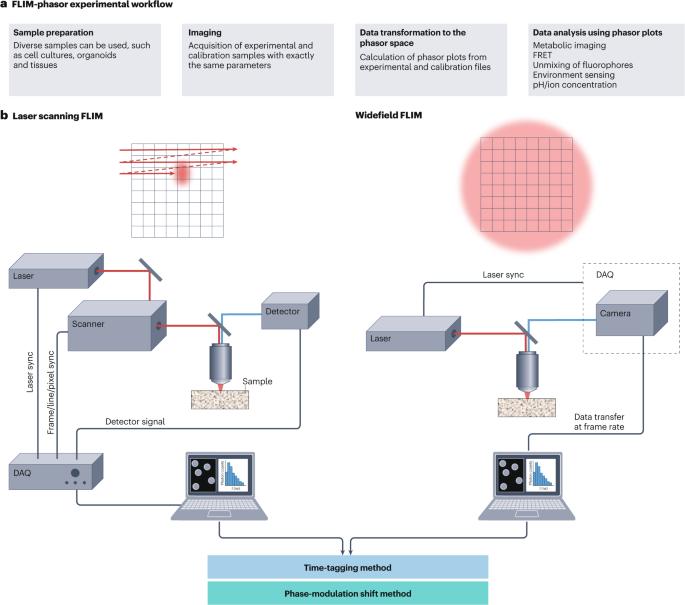Fluorescence lifetime imaging microscopy
IF 56
Q1 MULTIDISCIPLINARY SCIENCES
引用次数: 0
Abstract
Fluorescence lifetime imaging microscopy (FLIM) is a powerful technique offering profound insights into a broad spectrum of biological processes such as metabolic imaging, protein–protein interactions and live-cell intracellular dynamics. The future of FLIM appears promising, with continuous technological advancements for time-resolved measurements pushing the boundaries for spatiotemporal information. However, the growth of the FLIM community has been slower, owing to the requirement for specialized training and technology. This Primer aims to address this gap by providing a comprehensive overview of FLIM principles, methods and analysis. We discuss various methods for measuring fluorescence lifetimes, including time-tagging and phase-modulation shift methods, along with their implementations and setup variations. Additionally, we explore different avenues for data analysis, with a specific focus on the phasor approach and its crucial considerations. Furthermore, we present a range of applications demonstrating versatility and usability of FLIM. Limitations and optimization strategies are also discussed, covering methodological constraints, equipment limitations and potential errors, along with their solutions. By sharing our expertise, we aim to expand FLIM to broader audiences while reinforcing concepts within the FLIM community. This Primer seeks to inspire bioimaging researchers to fully embrace FLIM, thereby advancing our understanding of complex biological systems. Fluorescence lifetime imaging microscopy can offer insights into biological processes such as metabolic imaging, protein–protein interactions and live-cell intracellular dynamics. In this Primer, Torrado et al. discuss methods for measuring fluorescence lifetimes, including time-tagging and phase-modulation shift methods, along with fluorescence lifetime imaging microscopy setup variations.

荧光寿命成像显微镜
荧光寿命成像显微镜(FLIM)是一种功能强大的技术,它能深入洞察各种生物过程,如新陈代谢成像、蛋白质-蛋白质相互作用和活细胞胞内动力学。随着时间分辨测量技术的不断进步,FLIM 的前景似乎一片光明。然而,由于对专业培训和技术的要求,FLIM 社区的发展较为缓慢。本入门指南旨在全面介绍 FLIM 的原理、方法和分析,从而弥补这一不足。我们讨论了测量荧光寿命的各种方法,包括时间标记法和相位调制偏移法,以及它们的实现和设置变化。此外,我们还探讨了数据分析的不同途径,特别关注相位法及其关键考虑因素。此外,我们还介绍了一系列应用,展示了 FLIM 的多功能性和可用性。我们还讨论了局限性和优化策略,包括方法限制、设备限制和潜在错误及其解决方案。通过分享我们的专业知识,我们旨在向更广泛的受众推广 FLIM,同时强化 FLIM 社区内部的概念。本入门指南旨在激励生物成像研究人员全面接受 FLIM,从而促进我们对复杂生物系统的了解。荧光寿命成像显微镜可以帮助人们深入了解代谢成像、蛋白质间相互作用和活细胞胞内动力学等生物过程。在本入门指南中,Torrado 等人讨论了测量荧光寿命的方法,包括时间标记法和相位调制偏移法,以及荧光寿命成像显微镜的设置变化。
本文章由计算机程序翻译,如有差异,请以英文原文为准。
求助全文
约1分钟内获得全文
求助全文

 求助内容:
求助内容: 应助结果提醒方式:
应助结果提醒方式:


